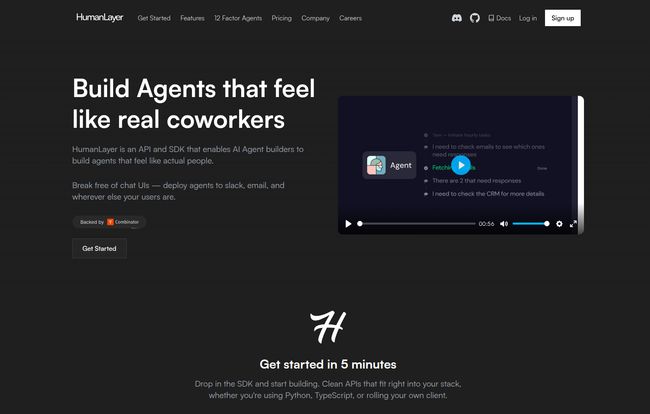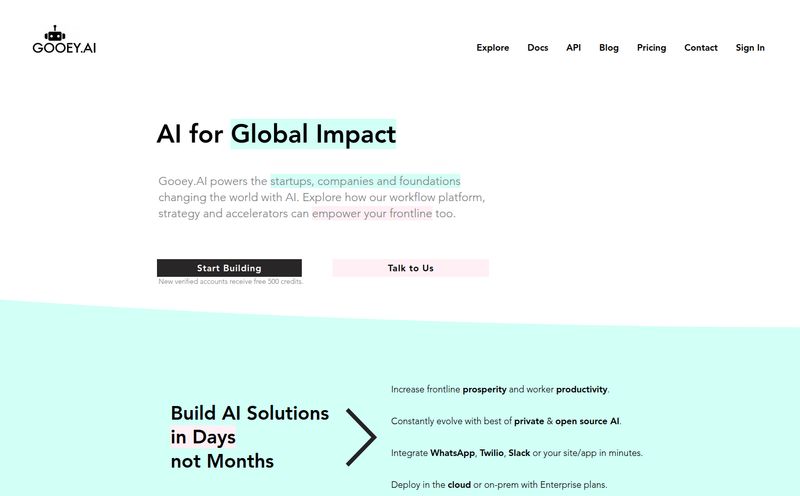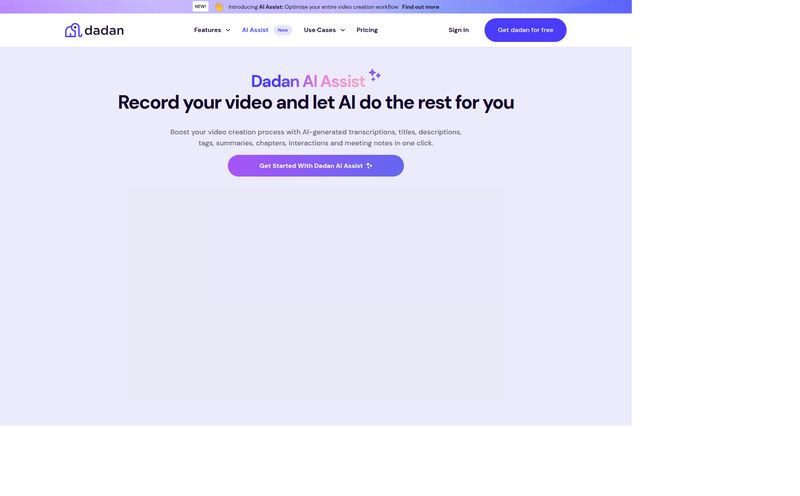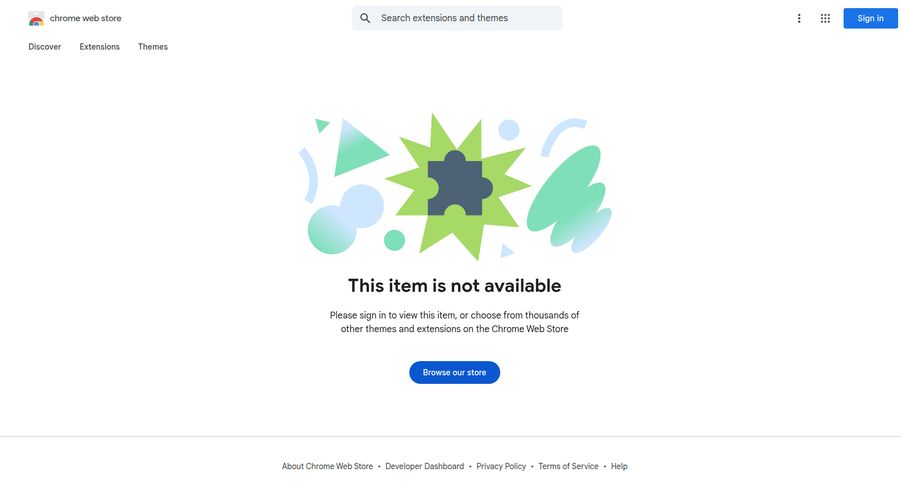We’ve all been there. You’re building this incredible, autonomous AI agent. It’s supposed to streamline a process, maybe automate some marketing outreach or sift through data. You press ‘run,’ and for a split second, you get that jolt of anxiety. That little voice in your head whispering, “Please don’t email the entire client list with gibberish. Please don’t accidentally delete the production database.”
The rise of powerful AI agents, from the early days of the Auto-GPT craze to more refined frameworks like CrewAI, has been nothing short of spectacular. But with great power comes… well, the potential for great screw-ups. We've been so focused on making agents smarter and more autonomous that we've sort of forgotten the most critical component: common sense. Human oversight. A safety net.
This is the exact problem I've been wrestling with in my own projects. How do you give an AI agent enough freedom to be useful without handing over the keys to the kingdom? I stumbled upon a tool recently, backed by Y Combinator no less, that feels like it was built specifically to answer that question. It’s called HumanLayer, and it might just be the missing piece of the puzzle for building AI agents that you can actually trust.

Visit HumanLayer
So, What Exactly is HumanLayer?
At its core, HumanLayer is an API and SDK designed to do one thing brilliantly: let your AI agents talk to humans. Not in a clunky chatbot window, but in the places where work actually happens—like Slack, Email, and Discord. The tagline on their site, “Build Agents that feel like real coworkers,” is spot on. It’s not about building a tool; it’s about building a teammate.
Instead of your AI just running wild, it can now pause at critical moments and ask for permission. Think of it like a junior developer who’s about to merge a big piece of code. They don’t just push to main; they open a pull request and ask for a review. HumanLayer lets your AI do the same thing for any action you define, whether it’s sending an email, updating a CRM, or spending company money.
More Than Just a Pause Button
But it's deeper than just a simple approval system. This isn't just about stopping the AI. It's about creating a collaborative loop. When a human denies a request, they can provide feedback. That feedback is then fed back into the agent’s context window. The agent learns. It gets better. It stops making the same mistakes. Suddenly, your AI isn't just a black box—it's a system that grows and adapts with human guidance.
The Core Features That Actually Matter
I’ve seen a lot of AI tools that are a mile wide and an inch deep. HumanLayer, on the other hand, seems laser-focused on solving the human-in-the-loop problem with some genuinely useful features.
Putting a Leash on Your AI with Human Approval
This is the main event. With a simple Python decorator—@hl.require_approval()—you can gate any function call. Let’s say you have a function called send_outreach_email(). By adding that one line of code, the agent now has to get a human to say “yes” before a single email goes out. The agent will ping the designated person or channel (say, #marketing-approvals on Slack) with a neat little message and Approve/Deny buttons. It's so simple, it's brilliant.
Meet Your Users Where They Are: OmniChannel Contact
The biggest failure of many internal tools is forcing users to change their behavior. No one wants another dashboard to check. HumanLayer gets this. It sends approval requests directly to Slack, Email, Discord, and even MS Teams or SMS on the higher-tier plans. Your team can approve or deny actions right from the tools they already have open all day. This is a massive win for adoption.
The 'Human as a Tool' Concept is a Game-Changer
This one really got my brain buzzing. With the hl.human_as_tool() function, you can flip the script. The AI can now ask a human a question when it gets stuck. Imagine an agent tasked with researching a competitor. It might hit a wall where it needs subjective input. It can literally pause and ask, “Based on these findings, which of these three marketing angles do you think is most promising?” That human response then becomes part of its knowledge base to continue the task. It's like giving your AI a phone-a-friend lifeline.
"Hot take: if you're serious about AI you don't want someone making the 'hard AI parts go away'. You want someone making the NON-CORE-PARTS go away so ALL YOU DO is work on the hard parts." - Kwok-Yin `Kwindla` Hsieh (@trydaily)
Advanced Workflows for the Real World
This isn't just for simple yes/no questions. What if the first person asked to approve something is on vacation? HumanLayer has built-in escalations and timeouts. You can route approvals to specific teams, create multi-step approval chains, and ensure that a request never gets stuck in limbo. This shows they’ve thought about real business processes, not just a developer’s toy project.
How Does HumanLayer Pricing Stack Up?
Okay, the tech is cool, but can you afford it? I was pleasantly surprised here. The pricing feels very fair and scales logically. They've clearly aimed to make it accessible.
| Plan | Price | Key Features |
|---|---|---|
| Starter | $0 / month | Free forever for tinkerers. 100 operations/month, Slack/Email/Discord channels, up to 10 users. A perfect starting point. |
| Premium | $500 / month | For teams. 2000 ops/month, advanced workflows, learning & auto-approvals, more channels (MS Teams, SMS), no branding. |
| Enterprise | Custom | For large-scale needs. Private VPC/on-prem deployment, SSO, volume discounts, expert advice. |
My take? The Starter plan is incredibly generous. It's not a crippled trial; it's genuinely usable for personal projects or small-team experiments. The jump to Premium at $500/month is significant, but for a business that's automating critical workflows, the value from features like auto-approvals and advanced escalations could easily justify the cost. It's a proper enterprise-ready tool at that point.
My Two Cents: Why I'm Genuinely Excited About This
Look, I'm a bit of a cynic when it comes to new dev tools. There’s so much hype. But HumanLayer feels different. It feels… necessary. It provides the guardrails that have been missing from the autonomous agent conversation. It’s less about a vague promise of AGI and more about solving a very real, very present problem for anyone building with LLMs today.
It’s the difference between giving an intern a company credit card with no limit, and giving them one with a clear approval process for any purchase over $50. One is reckless; the other is just good business. HumanLayer is that approval process for your AI. It’s a conscience-as-a-service, and I think its going to enable a whole new class of more ambitious, yet safer, AI applications.
Frequently Asked Questions about HumanLayer
- 1. What is HumanLayer in a nutshell?
- HumanLayer is an API and SDK that allows developers to easily add human-in-the-loop approvals and feedback to their AI agents. It lets an agent pause and ask a human for permission or help via common channels like Slack and Email before performing a critical action.
- 2. How is this different from just coding a manual approval step myself?
- While you could build a basic version yourself, HumanLayer provides a ton of production-ready features out of the box: omni-channel notifications, handling user responses, secure authentication, advanced workflows with escalations and timeouts, and the ability to learn from feedback. It saves you from building and maintaining all that complex infrastructure.
- 3. What AI frameworks and LLMs does it work with?
- It's designed to be LLM and framework agnostic. Because it operates at the tool-calling layer, it works with any major orchestration framework like LangChain, CrewAI, LlamaIndex, and any LLM that supports function/tool calling, such as models from OpenAI, Anthropic, or Google.
- 4. Is there really a free plan? What’s the catch?
- Yes, the Starter plan is free forever. It's designed for developers, hackers, and small projects. The main limitations are the 100 operations/month cap (you can pay for more) and limited data retention for the feedback logs. It's a fully functional plan, not just a demo.
- 5. What do you mean by 'Human as a Tool'?
- This is a feature where the AI can proactively request information or subjective input from a human. Instead of just asking for approval on an action it wants to take, the AI can ask a question to get the knowledge it needs to proceed with its task. It essentially makes human expertise an available 'tool' for the agent to call upon.
- 6. Can I host this on my own infrastructure?
- Yes, the Enterprise plan offers options for deployment into your own private VPC or on-premise servers for maximum security and control.
The Future is Collaborative, Not Just Autonomous
For a while, the endgame for AI seemed to be full autonomy—to remove the human entirely. But I think we're starting to realize that's not the most effective (or safest) path. The real power lies in collaboration, in creating hybrid systems where AI handles the scale and speed, and humans provide the wisdom, oversight, and creativity.
HumanLayer is one of the first tools I've seen that is built from the ground up on this philosophy. It's not just a feature; it's a new way of thinking about agent architecture. If you're building AI agents and that little voice of anxiety ever creeps in, you should probably check it out. You might just build your next favorite coworker.



